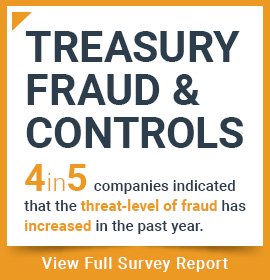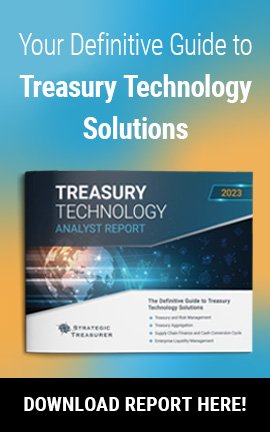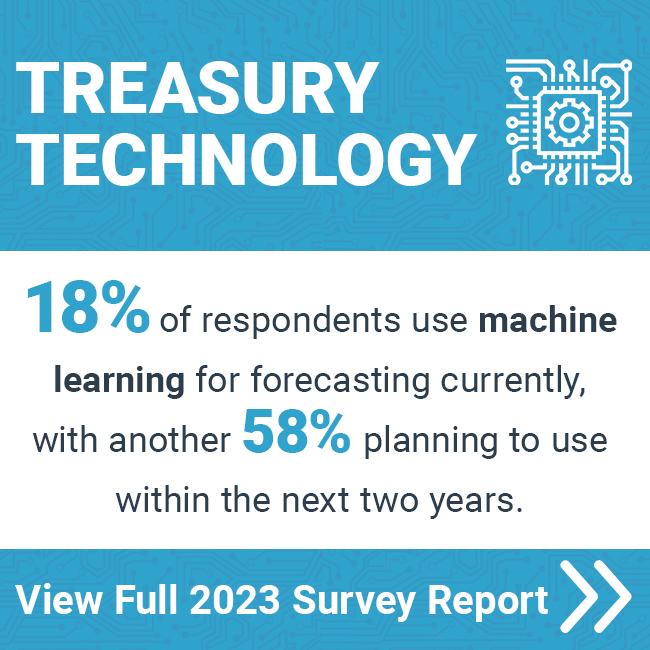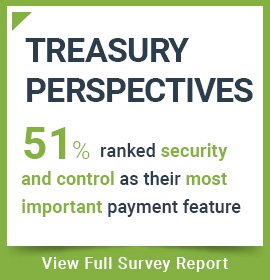
Treasury Technology Ten Years from Now
For several years now, Strategic Treasurer has asked a subset or our survey respondents to share a top question or concern regarding treasury or the treasury technology industry. We have compiled those entries in order to establish a list of FAQs and answers for treasury and finance professionals. This is the first in a series of such responses.
Analyst Commentary + Thoughts from a Senior Treasury Consultant [Video]
First, I think it’s important to remember that change occurs slowly. Nothing happens overnight. For instance, Treasury Management Systems (“TMS”) have been around for decades, but survey data indicates that just within the past several years is when the number of firms using a TMS or another treasury system for their core operations surpassed the number that still use Excel. Thus, even when a new technology like blockchain bursts onto the scene, it takes a while for adoption to occur.
That being said, the industry continues to move along a path that is pushing the interconnectedness of all systems and solutions, further automation & centralization, and the use of a single tool or platform to enhance straight-through-processing for core operations. In recent years, the use of SaaS technology has provided further benefits in these areas, and is seeing widespread adoption, especially in the financial realm. In fact, some of the largest TMS providers today solely offer their solution set via the cloud. Furthermore, providers that have traditionally offered their product as an installed solution have begun introducing SaaS-based versions as well. At this point in time, SaaS-based treasury solutions are dominating new sales, and we expect this momentum to continue over the next several years.
Ultimately, the direction the industry is headed in looks to be one in which a single system will be capable of providing functionality for virtually every facet of treasury’s responsibilities, with an emphasis on automation and straight-through-processing so that more tasks can be completed seamlessly and in real-time. Today, many companies have a number of treasury systems in place, such as an ERP, as well as a TMS and individual bank portals. They might also use a supply chain finance solution, a FX trading platform, and a SWIFT Service Bureau or Treasury Aggregator. However, a number of technology providers have begun combining all the services and functionalities offered through these distinct solutions into one platform, so that only a single technology solution needs to be used, rather than five or six. This drastically reduces internal complexity and cuts down on costs as well. We have also seen treasury software begin to be offered as part of an online store or marketplace where firms have access to “on-demand” functionality. As part of these marketplaces, users can purchase functionalities or individual solution components without having to purchase an entire solution, which reduces price points and ensures that firms only purchase the services that they need.
Another quick comment on this is that software providers are increasingly incorporating visual dashboards and displays into their solutions that make for easier viewing of data. The Excel-based spreadsheet view, something that has long dominated the interfaces of treasury systems, is being replaced with charts, graphs, dials, and all manner of visual instruments that seek to simplify how data is displayed. For instance, instead of showing cash positions in a table or spreadsheet, a solution might provide a set of pie charts where cash positions can be viewed across different countries, currencies, and banks. For further analysis, users can click on any chart and are provided with the underlying details. Overall, this is a much more visually appealing and intuitive method of displaying data, and the practice of implementing graphical interfaces and dashboards will see further adoption as firms realize the benefits that these interfaces provide.
For a more in-depth look at how specific components of treasury technology are expected to evolve over the next decade, watch the following video filmed with Craig Jeffery, Managing Partner of Strategic Treasurer.

Isaac Zaubi
Publications Manager, Treasury Analyst
Isaac Zaubi has been with Strategic Treasurer for over 2 years as a treasury analyst before coming into his current role as Publications Manager. Isaac’s contributions center primarily around the development and management of publications, including fintech analyst reports, survey results reports, e-books, and whitepapers.





